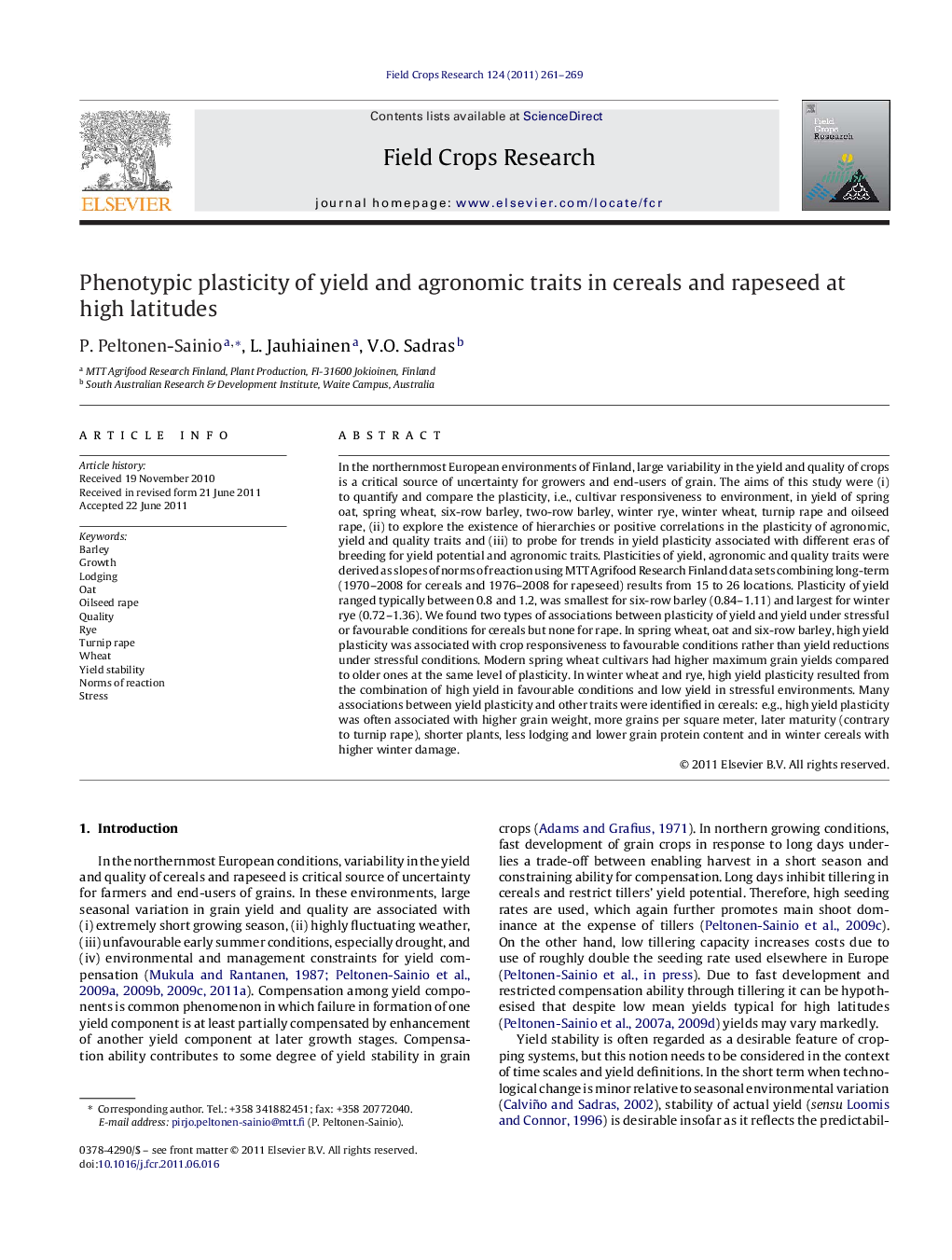| کد مقاله | کد نشریه | سال انتشار | مقاله انگلیسی | نسخه تمام متن |
|---|---|---|---|---|
| 4510687 | 1321869 | 2011 | 9 صفحه PDF | دانلود رایگان |

In the northernmost European environments of Finland, large variability in the yield and quality of crops is a critical source of uncertainty for growers and end-users of grain. The aims of this study were (i) to quantify and compare the plasticity, i.e., cultivar responsiveness to environment, in yield of spring oat, spring wheat, six-row barley, two-row barley, winter rye, winter wheat, turnip rape and oilseed rape, (ii) to explore the existence of hierarchies or positive correlations in the plasticity of agronomic, yield and quality traits and (iii) to probe for trends in yield plasticity associated with different eras of breeding for yield potential and agronomic traits. Plasticities of yield, agronomic and quality traits were derived as slopes of norms of reaction using MTT Agrifood Research Finland data sets combining long-term (1970–2008 for cereals and 1976–2008 for rapeseed) results from 15 to 26 locations. Plasticity of yield ranged typically between 0.8 and 1.2, was smallest for six-row barley (0.84–1.11) and largest for winter rye (0.72–1.36). We found two types of associations between plasticity of yield and yield under stressful or favourable conditions for cereals but none for rape. In spring wheat, oat and six-row barley, high yield plasticity was associated with crop responsiveness to favourable conditions rather than yield reductions under stressful conditions. Modern spring wheat cultivars had higher maximum grain yields compared to older ones at the same level of plasticity. In winter wheat and rye, high yield plasticity resulted from the combination of high yield in favourable conditions and low yield in stressful environments. Many associations between yield plasticity and other traits were identified in cereals: e.g., high yield plasticity was often associated with higher grain weight, more grains per square meter, later maturity (contrary to turnip rape), shorter plants, less lodging and lower grain protein content and in winter cereals with higher winter damage.
• Range of plasticity in yield in northern conditions was similar to that recorded elsewhere.
• Modern spring wheat cultivars combined high maximum yields with reasonable level of plasticity.
• High yield plasticity associated with high grain weight and more grains per square meter.
• High yield plasticity associated with late maturity, less lodging and lower grain protein content.
Journal: Field Crops Research - Volume 124, Issue 2, 14 November 2011, Pages 261–269